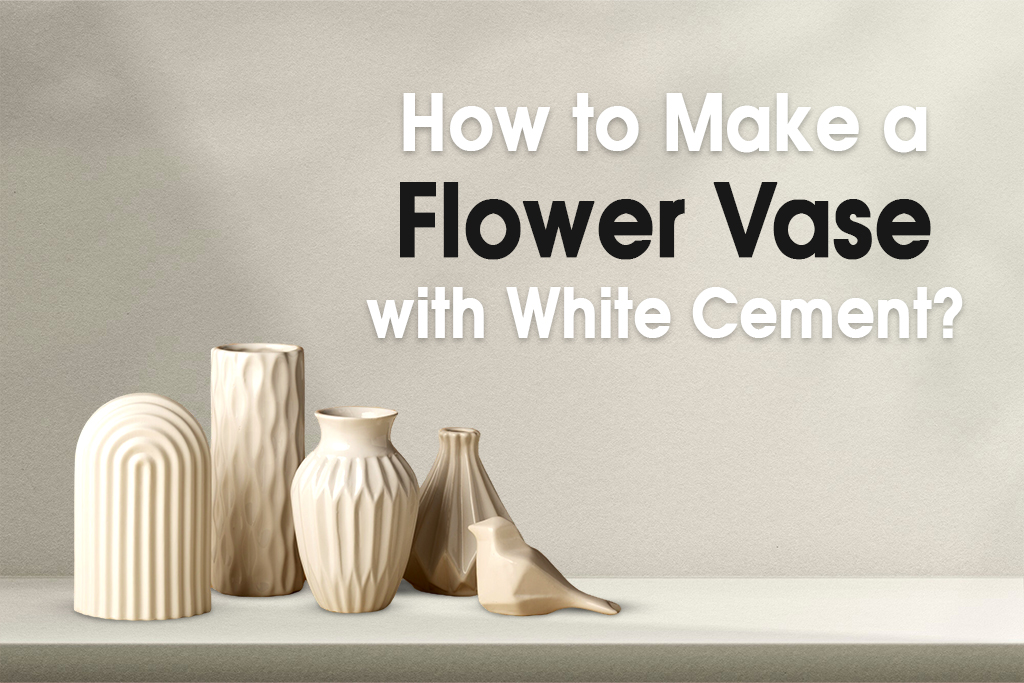How to Make a Flower Vase with White Cement is a simple, budget-friendly DIY project that allows you to craft a unique, rustic decor piece for your home. With just a few basic materials, you can transform ordinary items like balloons, cardboard tubes, or even potato chip containers into beautiful, custom-made vases. Not only is this project affordable, but it also offers a wonderful opportunity to get creative with shapes, textures, and finishes. In this guide, we’ll walk you through two easy methods: the first involves using a balloon to create a rounded, organic-shaped vase, perfect for adding a touch of elegance to any room. The second method uses a potato chip container and a cardboard tube to create a more structured, cylindrical vase that is sturdy and stylish.
Both methods are straightforward and require only a few common materials, making this project accessible for beginners and experienced DIY enthusiasts alike. So, let’s get started on creating your own beautiful cement vase, customized to fit your style!
Method 1: Cement Balloon Vase
This method uses a balloon as a mold, resulting in a rounded vase shape with a smooth, organic appearance.
Materials Needed:
- White Cement: 2 cups
- Water: 250–300 ml, depending on the brand of cement
- Balloon: 1 (Choose a large balloon for a bigger vase)
Step-by-Step Instructions:
Prepare the Cement Mixture
Start by mixing 2 cups of white cement with 250–300 ml of water in a bowl. The water quantity may vary depending on the brand, so adjust as needed to achieve a smooth, thick mixture without lumps. Ensure the cement mixture isn’t too runny, as it needs to stick to the balloon.
Inflate the Balloon
Blow up the balloon to the size you want for your vase. You can make it as large or small as desired, but remember that the bigger the balloon, the thinner the cement layer will be.
Coat the Balloon with Cement
Pour the cement mixture into the balloon carefully, then seal the end of the balloon. Twist and turn the balloon to ensure the cement coats the entire inside surface evenly. Keep rotating the balloon every 15 minutes to prevent the cement from settling on one side, which helps create a uniform thickness.
Allow the Cement to Dry
Set the balloon aside in a safe place, allowing it to dry for about 24 hours. Make sure to keep rotating the balloon every few hours as it dries to avoid any uneven distribution of the cement.
Remove the Balloon and Finish
After a day, the cement should be fully hardened. Carefully pop the balloon and peel it away from the cement shell. If you want, you can sand any rough edges for a smoother finish. This rounded cement vase is perfect for small plants or flowers.
Method 2: Cardboard and Potato Chip Container Vase
This method uses a potato chip container and cardboard tubes to create a more structured, cylindrical vase. It also incorporates glue and dish soap into the cement mixture for added durability and smoothness.
Materials Needed:
- White Cement: 2 cups
- White Wood Glue: 2 tablespoons
- Dish Soap: 2 tablespoons
- Water: 100–200 ml
- Potato Chip Container: 1 (such as a Pringles can)
- Cardboard Tube: 1 (e.g., an empty paper towel or toilet paper roll)
- Old Newspaper: for filling and support
- Sandpaper: to smooth the vase after drying
- Matt Sealer (optional): for finishing
- Acrylic Paint (optional): to add color
Step-by-Step Instructions:
Prepare the Cement Mixture
In a mixing bowl, combine 2 cups of white cement, 2 tablespoons of white wood glue, and 2 tablespoons of dish soap. Gradually add 100–200 ml of water, stirring until you reach a thick, smooth consistency. The dish soap helps to prevent cracks, while the glue improves the cement’s adhesion and flexibility.
Set Up the Vase Mold
Insert the cardboard tube into the center of the potato chip container. Stuff some old newspaper around the tube to stabilize it in the center. The chip container acts as the outer mold for the vase, while the cardboard tube creates the hollow center where you’ll place the flowers.
Pour the Cement Mixture
Carefully pour the cement mixture into the gap between the potato chip container and the cardboard tube. Tap the container gently on a hard surface to eliminate any air bubbles and help the cement settle evenly.
Let the Vase Dry
Place the container in a well-ventilated area and let it dry for approximately 24 hours. Once the cement is fully hardened, remove the cardboard tube from the center, then peel away the potato chip container to reveal your vase.
Sand and Finish the Vase
Use sandpaper to smooth any rough or uneven surfaces. For additional durability, you can seal the vase with a matt sealer. Finally, personalize your vase with acrylic paint in colors of your choice.
Optional Finishing Touches
- Sanding and Smoothing:
After the cement vases have dried, sand the outer surface to remove any imperfections. You can leave it rough for a more natural look or sand it smooth for a polished appearance. - Sealing and Painting:
If you want your vases to last longer and be water-resistant, apply a matt sealer. You can also paint the vases with acrylic paint to match your decor. Choose colors that complement your space, or go for a minimalist look with neutral tones.



